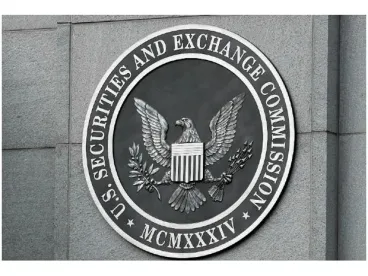The SEC has continued to pursue a number of insider trading cases this year, both large-scale and small. Some of those matters involved trades that yielded relatively small amounts of profits: $40,000-$60,000. Why does the enforcement division spend resources on these smaller cases? First, they serve as a reminder that violations can be identified, even if trades are relatively small. And the cases are relatively easy to prove when a connection to an insider source can be readily identified. More importantly, these cases demonstrate that the SEC is uncovering new leads through data analysis.
It is worth noting that the FY 2018 budget recently published by the White House proposes eliminating the SEC’s annual $50 million “Reserve Fund,” created under Dodd-Frank and used to advance the SEC’s technological resources. Although the budget is unlikely to be passed in its current form, cutting this fund may affect the SEC’s funding to mine and analyze large data sets.
Analysis and Detection Center
Over the past few years, the SEC has taken strides to find cases on its own, not simply waiting for tips or FINRA referrals. Much of the SEC’s work on insider trading matters occurs within the Enforcement Division’s Market Abuse Unit, which proactively launches its own investigations through data mining and advanced detection. The co-chief of that unit, Joseph Sansone, has repeatedly noted that it makes sense to invest resources into investigations when analysts notice patterns in multiple trades over a period of time.
Staffers in the Market Abuse Unit’s Analysis and Detection Center are tasked with finding and exploring leads by digging through billions of rows of trading data from historical “bluesheet” requests to brokerage firms. Those data may create leads for new cases or could help expand existing investigations.
For example, the data may reveal an individual’s repeated trades in advance of corporate mergers, suggesting access to material nonpublic information. Or the analysis may identify one particularly well-timed trade. The analysts can also detect otherwise unrelated trades that are similarly timed, produce similar profits, and/or involve investments in the same companies. Once patterns are identified, additional information can be analyzed (phone records, chats, social networks) to identify relationships between the traders or to zero in on a common source of inside information.
Recent Sample Cases
One example is the March 2017 case, SEC v. Hartung, which specifically noted the work of the Analysis and Detection Center. In that case, the SEC charged a Pennsylvania man who allegedly traded on material nonpublic information about a pending pharmaceutical company merger. According to the SEC’s complaint, Hartung learned about the potential deal from a relative who worked at the acquiring company. After the deal was announced, he sold shares for total profits of $59,000. He agreed to a settlement requiring him to disgorge ill-gotten gains of $59,688 (plus interest) and a civil penalty of $59,688.
Also in March the SEC charged Todd Alpert—a Pennsylvania security guard who worked in the home of a public company board member—with insider trading in securities of that board member’s company. The complaint alleges that Alpert was responsible for reviewing a “security email account” to which the board member sometimes forwarded emails detailing business activities. The SEC alleged that after he reviewed these emails and learned that a confidential merger was in negotiations, Alpert purchased company shares and call options. After the merger was announced, Alpert sold all his shares and stock options for a profit of approximately $44,000. Alpert is apparently contesting the allegations.
Finally, there are additional examples of matters that the SEC investigated with the assistance of the Analysis and Detection Center. In SEC v. Fung, the SEC alleged that the defendant traded on a tip from a friend about an imminent pharmaceutical company acquisition. According to the SEC, the friend learned the information through his employer, which had provided financial advice to one of the merging companies’ board members. The SEC’s press release specifically noted the Analysis and Detection Center’s work “crunching trading data to identify suspicious trading patterns.”
Traditionally, insider trading inquiries were triggered by either outside tips or FINRA referrals. Yet recent cases have demonstrated that, using existing trading data, the SEC will continue to pursue insider trading cases through its own data analysis. It remains to be seen whether budget cuts will affect these efforts.




 />i
/>i

